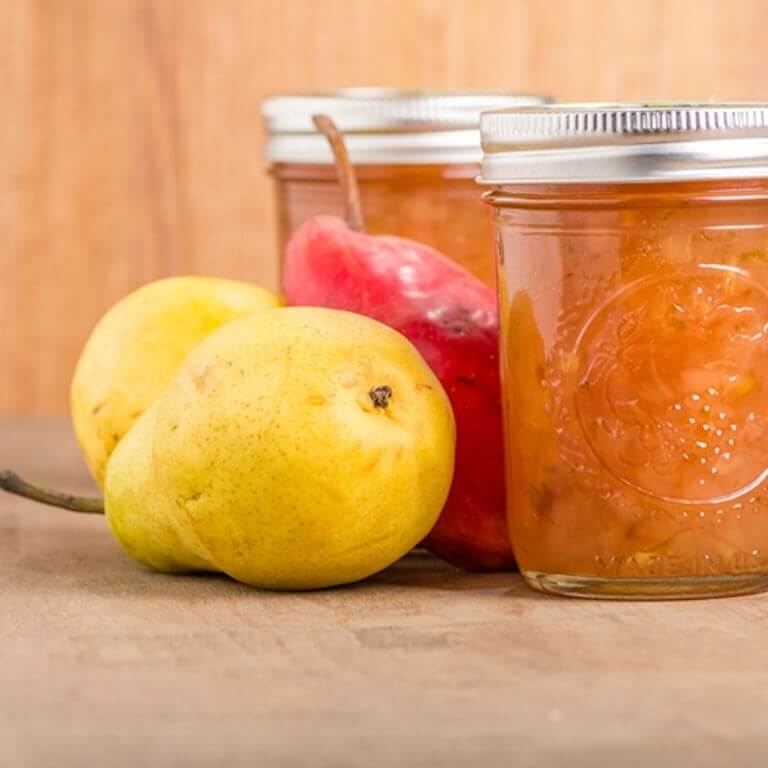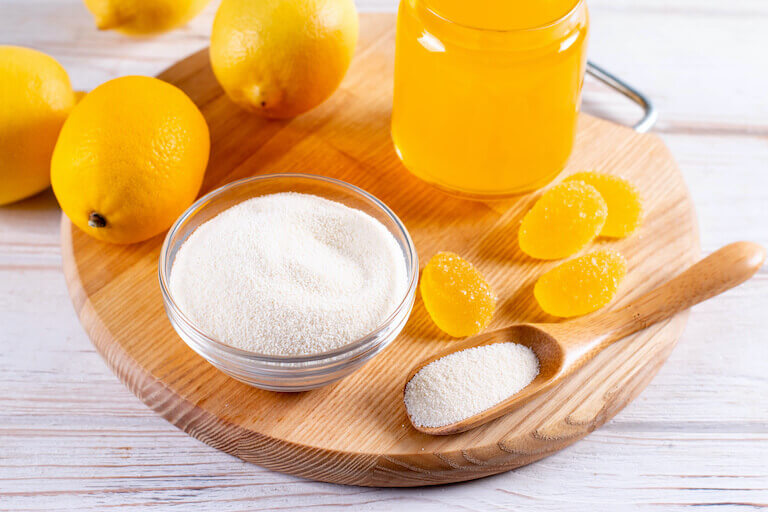Listen to This Article:
Fruit pectin is a thickening agent critical for correct consistency in a variety of sweet foods — from jams and jellies to dessert fillings.
Think about delicious fruit preserves in which chunks of strawberries, blackberries, or raspberries are distributed throughout. Pectin is the ingredient responsible for suspending the fruits within the mixture.
Let’s dive deeper into how pectin is used and how to make fruit pectin on your own.
What Is Fruit Pectin?
Pectin’s sole purpose is to provide structure to the cell walls of plants, which helps hold them together. When it’s extracted and used in recipes, it’s responsible for the gelling process — a crucial step in setting preserves like jelly or jam.
Pectin is a naturally-occurring polysaccharide — a type of carbohydrate — that provides a thicker consistency in preserves and fillings, making them ideal for spreading.
It’s found in particular abundance in the skin of citrus fruits and apples, and pectin levels decrease as the fruit ripens. Pectin should not be consumed in its original form because it can interfere with nutrient absorption, so it requires some preparation before it’s edible. Pectin is sold in liquid or powder form, but you can make your own as well.
The Many Uses for Fruit Pectin
- Use for proper gelling in preserves like jams, jellies, and marmalade.
- Put in compote to set pieces of fruit in place, distributed evenly throughout.
- Include for correct consistency in nappage — also known as apricot glaze.
- Add to pastry or bread doughs to strengthen and thicken it, as well as provide added moisture.

How to Make Your Own Apple Pectin
Start to finish: 24 hours (60 minutes active cooking)
Yields: 1 1/2 cups
Ingredients
- 7 large, tart apples
- 4 cups water
- 2 tablespoons lemon juice
Instructions
- Wash the apples, but do not peel them.
- Cut apples into quarters, core included.
- Put apples in a large pot, add water and lemon juice. Bring mixture to boil.
- Let boil for 40 minutes, stirring at the halfway mark.
- Strain the mixture through cheesecloth. Let the mixture strain overnight to get the most pectin.
- Boil the pectin and cook until reduced by half – about 20 minutes.
- Refrigerate to use within four days, or store in the freezer for up to six months.

Tips for Ingredient Selection and Pectin Use
Pectin is only helpful in achieving your desired result if it’s used correctly in your recipe.
Using the Right Form of Pectin in Recipes
If you’re making a recipe that calls for pectin, it’s important to note whether it lists liquid or powdered pectin, as the two are not necessarily interchangeable, and they may require different preparation methods. Pectin conversions aren’t one-to-one either. Generally, 2 tablespoons of liquid pectin equal 4 teaspoons of powdered pectin, so if you’re substituting in a recipe, be sure to convert correctly.
How to Use Liquid Pectin
Liquid pectin is almost always added toward the end of the process, once the other ingredients have been boiling for some time and the mixture is ready for simmering and gelling.

How to Use Powdered Pectin
Adding powdered pectin typically occurs toward the beginning of the process, often being combined with the fruit juice ingredient prior to heating. A recipe that calls for pectin in powder form will usually tell you to withhold the sugar until the very end, as it will cause gelling once it’s combined with the pectin.
Choose Green Apples Over Other Varieties
Apples are one of the best sources of pectin, but the type of apple you choose for your recipe matters. Green apples are best for this recipe. As an apple ripens, its pectin is broken down. This means that the riper your apples, the less pectin you’ll have in your final product.
To figure out how ripe an apple is, observe its appearance. The best apples will be green, harder than ripe apples, and will taste sour. These apples have the most pectin — perfect for making your own apple pectin.
Learning to Use Pectin in Your Pastries
As pectin is a key ingredient for a variety of pastries — whether in their dough or their fillings — mastering its use is important for pastry chefs and bakers. If you own a bakeshop or aspire to work as a professional baker someday, you can acquire more pivotal pastry techniques with an online or on-campus education in baking & pastry arts.
Learn more about the important elements of pastries, cakes, and confections as well as the fundamentals of design and decoration.

Take the Culinary Career Survey
We’ve compiled a checklist of all of the essential questions into one handy tool: career options, culinary interest surveys, educational opportunities, and more.
Looking for more recipes? Try these next:
This article was originally published on August 31, 2015, and has since been updated.

